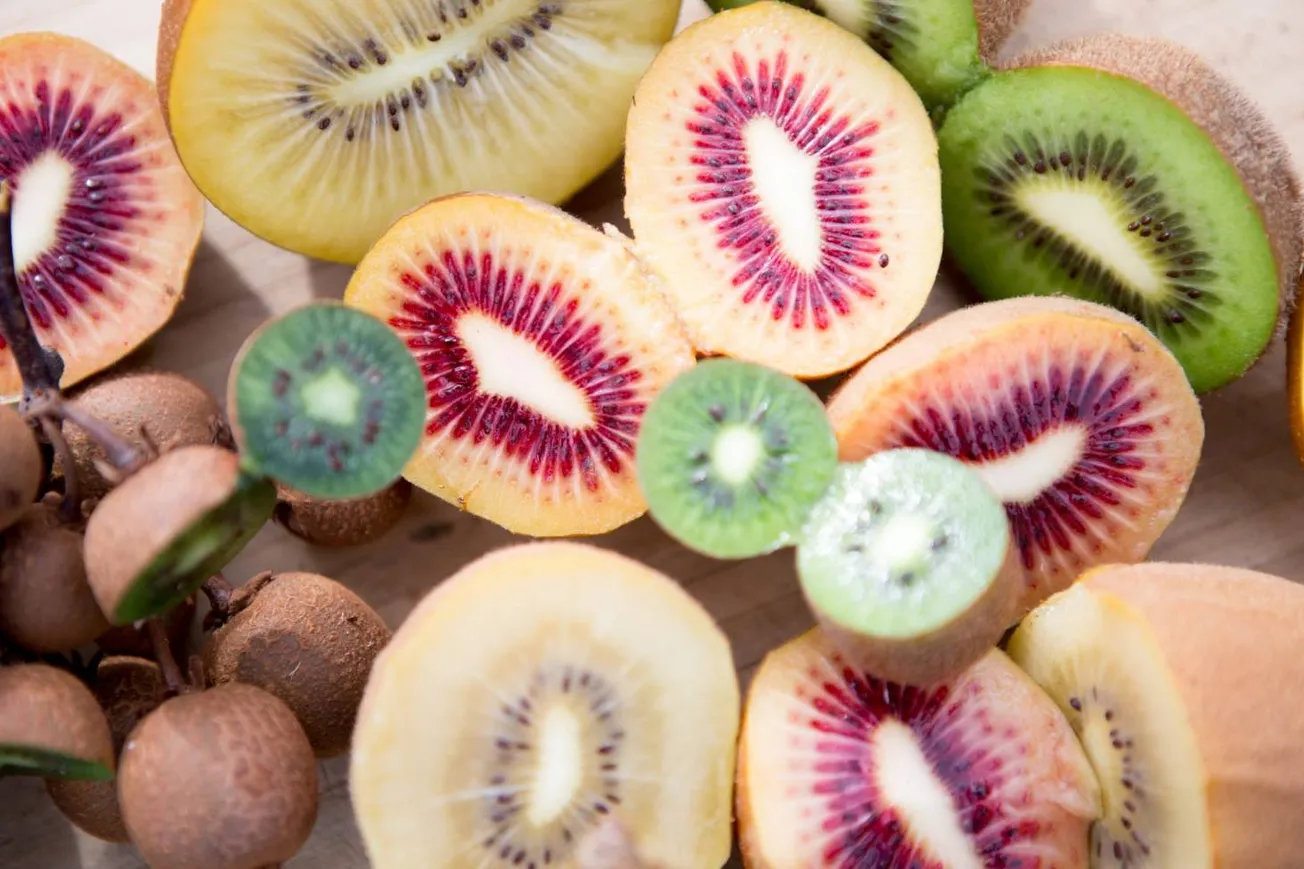It was 60 years’ ago this weekend that Jack Turner, from Turners & Growers coined the name ‘kiwifruit’ in a management meeting. The rest, as they say, is history.
The prominent produce company Turners and Growers announced that it would from 1959 on export Chinese gooseberries as ‘kiwifruit’. Introduced to this country in 1904, kiwifruit are now cultivated worldwide, with New Zealand-grown fruit marketed as ‘Zespri’.
Despite the name, kiwifruit are not native to New Zealand. Seeds were brought to New Zealand in 1904 by Mary Isabel Fraser, the principal of Wanganui Girls’ College, who had been visiting mission schools in China. They were planted in 1906 by a Whanganui nurseryman, Alexander Allison, and the vines first fruited in 1910. People thought the fruit had a gooseberry flavour and began to call it the Chinese gooseberry. It is not related to the Grossulariaceae family to which gooseberries belong.
Green Kiwifruit was first developed in New Zealand by Hayward Wright in the 1920’s. It is oval-shaped with brown, fuzzy skin. The vibrant, green flesh contrasts with a white core and small, black seeds. Green Kiwifruit is a tangy, sweet and sour combination of invigorating flavours.
New Zealand began exporting the fruit to the US in the 1950s. This was the height of the Cold War and the term Chinese gooseberry was a marketing nightmare for Turners and Growers. Their first idea, ‘melonettes’, was equally unpopular with US importers because melons and berries were subject to high import tariffs. In June 1959, Jack Turner suggested the name kiwifruit during a Turners and Growers management meeting in Auckland. His idea was adopted and this later became the industry-wide name.
The Bay of Plenty town of Te Puke, where New Zealand’s kiwifruit industry began, markets itself as the ‘Kiwifruit Capital of the World’. In 2011 Italy was the world’s leading producer of kiwifruit, followed by New Zealand, Chile, Greece, France, the USA and Iran. Most New Zealand kiwifruit is now marketed under the brand-name Zespri, partly as a way to distinguish ‘Kiwi’ kiwifruit from the produce of other countries.
NZ History
The big money these days is in the G3, SunGold, kiwifruit which has had 10 years of development and came to prominence after the PSA disaster which took out the G16 variety crops.
Full of vitality, this juicy, golden-fleshed variety has a refreshing sweet taste with just a hint of sour. An attractive, larger kiwifruit with a delicate texture inside a smooth skin. SunGold has a beautiful consistent shape and is delighting consumers all over the world. SunGold is a great source of vitamin C, dietary fibre, folate and other minerals and antioxidants, making it one of the most nutrient-dense fruits available.
Red kiwifruit is the next new development to come to market.








